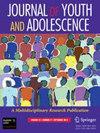“a越多越糟吗?”探索青年行为的非线性关联”。
IF 3.6
1区 心理学
Q1 PSYCHOLOGY, DEVELOPMENTAL
引用次数: 0
摘要
尽管人们认为童年不良经历(ace)越多,健康和社会问题越严重,但缺乏对年轻人不良经历-结果关系的其他形式的研究,包括这些联系是否因性别而异。本研究探讨了在男性和女性青少年中,不良经历与内化问题(自杀意念/企图、抑郁、躯体抱怨)和外化行为(再逮捕、再判决、酒精使用、药物使用)之间的剂量-反应关系是否被一致观察到,还是显示了阈值效应或饱和效应(非线性模式)。行政数据来自23,000多名完成社区佛罗里达州少年司法安置的涉及司法的青少年(平均年龄= 17.0,SD = 1.7, 77.2%为男性,32.8%为女性)。估计包含线性和二次ACE项的逻辑回归模型来评估非线性效应,并包括相互作用项来测试性别差异。结果显示,包括累犯和内化症状在内的几种结果呈曲线关系,ACE水平越高,影响越小。尽管女性报告了更多的ACE暴露和更高的内化症状率,ACE-结局关系的形状在性别上没有显著差异。这些发现挑战了ACE研究中的线性假设,并强调了建模阈值或饱和效应的重要性。对少年司法政策和实践的影响突出了评估和干预战略的需要,这些战略不仅要对所经历的逆境的数量和类型敏感,而且要对个人和群体在脆弱性和反应方面的差异敏感。本文章由计算机程序翻译,如有差异,请以英文原文为准。
"Are More ACEs Always Worse? Exploring Nonlinear Associations with Youth Behavior".
Although it is assumed that more Adverse Childhood Experiences (ACEs) are associated with worse health and social problems, there is a lack of research testing alternative forms of the ACEs-outcome relationship among young people, including whether these associations differ by sex. This study examines whether the assumed dose-response relationship between ACEs and internalizing problems (suicidal ideation/attempts, depression, somatic complaints) and externalizing behaviors (rearrest, readjudication, alcohol use, drug use) is consistently observed or instead demonstrates threshold effects or saturation effects (non-linear patterns) for both male and female adolescents. Administrative data were used from over 23,000 justice-involved youth who completed a community-based Florida Department of Juvenile Justice placement (mean age = 17.0, SD = 1.7, 77.2% male, 32.8% female). Logistic regression models incorporating both linear and quadratic ACE terms were estimated to assess non-linear effects and included interaction terms to test for sex differences. Results revealed curvilinear associations for several outcomes, including recidivism and internalizing symptoms, with diminishing effects at higher ACE levels. Although females reported greater ACE exposure and higher rates of internalizing symptoms, the shape of the ACE-outcome relationships did not differ significantly by sex. These findings challenge assumptions of linearity in ACE research and underscore the importance of modeling threshold or saturation effects. Implications for juvenile justice policy and practice highlight the need for assessment and intervention strategies that are sensitive not only to the amount and type of adversity experienced but also to individual and group differences in vulnerability and response.
求助全文
通过发布文献求助,成功后即可免费获取论文全文。
去求助
来源期刊

Journal of Youth and Adolescence
PSYCHOLOGY, DEVELOPMENTAL-
CiteScore
8.20
自引率
6.10%
发文量
155
期刊介绍:
Journal of Youth and Adolescence provides a single, high-level medium of communication for psychologists, psychiatrists, biologists, criminologists, educators, and researchers in many other allied disciplines who address the subject of youth and adolescence. The journal publishes quantitative analyses, theoretical papers, and comprehensive review articles. The journal especially welcomes empirically rigorous papers that take policy implications seriously. Research need not have been designed to address policy needs, but manuscripts must address implications for the manner society formally (e.g., through laws, policies or regulations) or informally (e.g., through parents, peers, and social institutions) responds to the period of youth and adolescence.
 求助内容:
求助内容: 应助结果提醒方式:
应助结果提醒方式:


